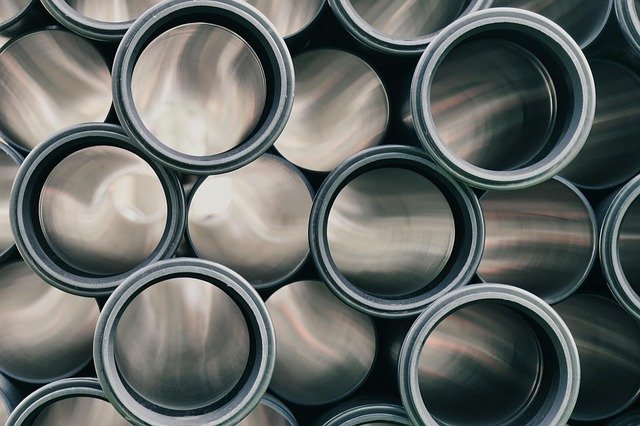Using Distributed Sensors and Pressure Analysis to Narrow Search Areas
Combining distributed sensors with targeted pressure analysis provides a practical framework for narrowing search areas for subsurface leaks. By integrating multiple data streams — acoustic, thermal, pressure, and telemetry — field teams can prioritize excavation and verification steps, reduce unnecessary disturbance, and coordinate local services more efficiently across pipelines and utility networks.

Detecting subsurface leaks with minimal disruption depends on narrowing the probable location before any physical intervention. By combining spatially distributed sensors, pressure analytics, and complementary modalities such as acoustics and thermography, teams can convert noisy telemetry into actionable guidance for mapping, permitting, and excavation planning. This reduces the area to inspect and improves safety during verification.
How do distributed sensors and IoT telemetry help?
Distributed sensors and IoT telemetry provide continuous visibility along linear assets like pipelines and buried utility mains. Point sensors record pressure, temperature, vibration, and acoustic signals while edge devices perform initial signal processing and forward only flagged events. When these feeds are synchronized with timestamps and GIS mapping, operators can identify which segment of a network experienced an anomaly and dispatch local services more precisely.
Integrating fiberoptics or long-range telemetry enables detection across extended routes without dense point installations. The combination of periodic sensor telemetry and higher-resolution distributed sensing balances cost and spatial coverage, allowing better prioritization of diagnostic resources.
What role does pressure analysis play in locating leaks?
Pressure analysis is the core hydraulic indicator of leaks. Evaluating time-series pressure drops, transient signatures, and steady-state imbalances helps determine whether a pressure loss originates from a leak, operational event, or instrumentation error. Comparing readings from multiple pressure sensors along a pipeline permits approximate triangulation of a leak zone.
Accurate analysis requires well-placed sensors and regular calibration; sensor drift or installation errors can produce misleading gradients. Cross-referencing pressure patterns with demand data, valve operations, and telemetry timestamps increases confidence in narrowing the search area prior to excavation.
How do acoustics, signal processing, and noise filtering narrow locations?
Acoustic detection captures the noise generated by fluid escaping a pressurized system. Advanced signal processing isolates leak-related frequency bands and transient patterns from ambient infrastructure noise. Noise filtering techniques, including adaptive filters and spectral analysis, reduce false positives and help estimate directionality when comparing signals at multiple sensors.
Fiberoptics-based distributed acoustic sensing augments point acoustic pickups by providing continuous spatial resolution, enabling teams to correlate pressure events with acoustic signatures and further restrict the likely leak location.
Can thermography and mapping help confirm suspected locations?
Thermography reveals temperature anomalies caused by escaping fluids or gas, which can alter soil temperature or surface patterns. Aerial drones or handheld thermal cameras quickly scan areas indicated by sensor telemetry, producing thermal maps that can align with acoustic and pressure evidence.
Accurate mapping requires up-to-date utility records and geospatial calibration. Overlaying thermography results on GIS layers and pipeline schematics helps rank candidate sites and plan minimally invasive verification techniques.
When is excavation and verification required, and how is it planned?
Excavation becomes necessary when multiple sensor modalities converge on a short segment or when public safety mandates physical inspection. Planning should follow a staged approach: pressure anomaly detection, acoustic or fiberoptic confirmation, thermal or visual cues, then targeted excavation. Coordination with local services, permitting authorities, and safety personnel minimizes disruption.
Using probe drilling, potholing, or targeted excavations reduces the footprint. Documentation of sensor readings before, during, and after verification supports incident records and improves future detection accuracy.
Why are calibration and ongoing telemetry vital for long-term monitoring?
Routine calibration of pressure transducers, acoustic pickups, and thermal sensors ensures that detection algorithms remain reliable. Sensor aging, environmental changes, and electronic drift all affect sensitivity; scheduled calibration and automated health telemetry help detect degraded devices before they cause misdirected excavations.
Maintaining historical telemetry and verification records allows trend analysis and refinement of signal processing and noise filtering parameters. Over time, this continuous improvement reduces false alarms and enhances the system’s ability to pinpoint subsurface issues accurately.
Conclusion
A layered approach that pairs distributed sensors, rigorous pressure analysis, acoustics, thermography, and robust signal processing delivers a practical path to narrowing search areas for subsurface leaks. When calibration, telemetry management, and mapping are integrated into operational workflows, teams can reduce unnecessary excavation, improve verification outcomes, and maintain safer, more efficient infrastructure operations.





